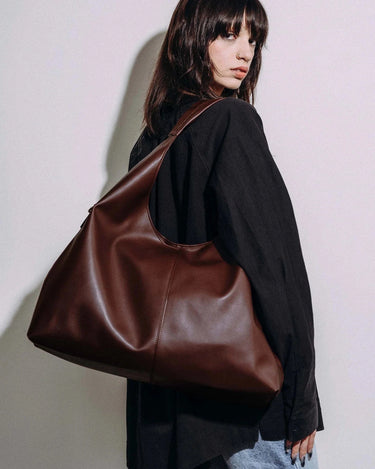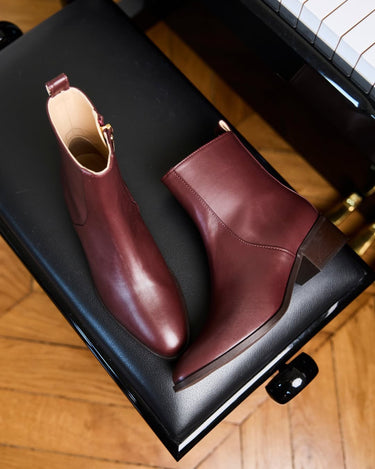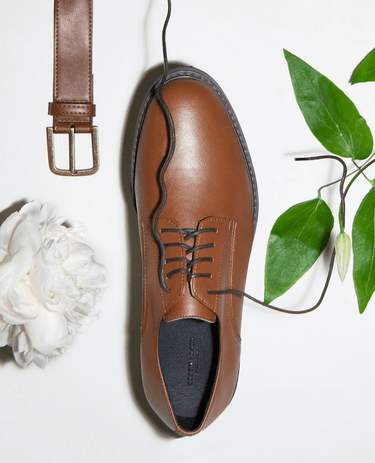What's The Impact Of Switching To Vegan Fashion?
When we choose what we wear, we choose how we engage with the world around us – ecosystems, human and non-human individuals. More specifically, different materials have vastly different impacts on our climate, waterways, land, native plants and animals, as well as domesticated animals, and our fellow humans. Too often this impact is harmful, rather than protective.
Choosing vegan fashion really does make a positive difference on the world around us, and to the fashion industry, helping to shift it away from harmful and exploitative practises. So let’s explore just some of these positive impacts!
By Emma Hakansson, Journalist & Founding Director of not-for-profit Collective Fashion Justice
 Choosing vegan leather saves emissions and water
Choosing vegan leather saves emissions and water
Did you know that according to the Higg Material Sustainability Index, cow skin leather is one of the most environmentally impactful materials to produce, only after alpaca wool and silk? In fact, even the most common synthetic leather, PU (polyurethane), has far less than half the overall production impact and related harm to the planet.
To make just one pair of cow skin leather boots, at least 66kg of carbon equivalent emissions (CO2e) are released. That’s like charging 8,417 phones. Comparatively, just 9.5kg of CO2e are released in the production of PU leather boots.
If we look at water, we see a similar story, with synthetic leather products requiring a whopping 14 times less water. A single cow skin leather tote bag is equal to over 17,100L of water – about 537 showers worth.
Of course, there are more sustainable leather alternatives than conventional synthetic leather, too. Piñatex’s pineapple leaf leather alternative has an even smaller production impact, and Desserto ‘cactus leather’ saves 1,864% of CO2e emissions as compared to animal leather, and 77.69% compared to PU. Meanwhile, when cork bark, transformed into ‘cork leather’ is peeled off of living trees without harming them, it helps those trees to sequester more carbon.
In a time where we have only about a decade to seriously pull back our emissions in order to halt irreversible climate change and crisis, and when fresh water is an increasingly precious resource which we all need to survive, it’s critical that we make decisions with this in mind – and opting for alternatives to animal leather is a great way to do that!
Choosing plant-based alternatives to wool protects native land and biodiversity
While wool similarly harms our planet (one light knit sweater made of wool rather than cotton emits 27 times more CO2e), wool production is far less scrutinised by the general public than leather, or synthetic materials like acrylic and polyester (which have a far smaller production impact, though they also shed plastic microfibres).
Untouched native land full of a biodiverse array of plant and animal life is critical to the health of our planet, and of course, the lives of those free-living animals are important and worth protecting. We need to keep biodiverse land safe, and we can do that by avoiding sheep’s wool, as well as wool from alpacas, and hair from goats labelled as cashmere and mohair.
Why? Well, to produce just one bale of Australian wool rather than Australian cotton (Australia is a major producer of both fibres), 367 times more land must be cleared or kept cleared. That’s a lot of land that native animals and plants can no longer fully thrive in, for the sake of fashion, when there are better alternatives. These alternatives include sustainably grown cotton, hemp, as well as cellulosic materials like Tencel and bamboo lyocell, recycled materials, and in the future, even lab-grown ones.
Each bale of wool and cotton represents garments of clothing, and so each of us have a part to play in ensuring we choose land-friendly clothing.
Choosing animal-free clothing can protect all animals – humans and non-humans
Every garment and accessory made from an animal-derived material, whether it’s a leather wallet, a down jacket, a wool scarf or something else, represents suffering. Every single animal-derived material is produced in a system which slaughters animals – this is true even for wool – and so not only must we consider the environmental footprint of clothes, but the ‘blood footprint’, too. While there is no perfect material, there certainly are materials which cause far more harm to the planet and to animals than others. Choosing non-animal materials will always be a better choice for the protection of animals.
In fact, animal-derived material supply chains don’t only harm non-human animals like ducks, sheep and cows, but humans, too (yes, remember we’re animals!).
People who work in slaughterhouses often face PITS, or perpetration-induced stress disorder, caused by being the reason for someone else's suffering. While issues of forced and unjust labour in the leather, wool and other animal industries are rife, these issues plague some cotton supply chains and other non-animal material production, too. However, it is only materials made from slaughtered and exploited animals which cause humans to suffer mentally in this way, due to just how confronting and cruel it is to transform a sentient being into a ‘material’.
Choosing to opt out of supporting fashion which harms human and non-human animals is a powerful and kind choice we all should consider making.
Emma is an activist, passionate about anti-speciesism and collective liberation more broadly.
She is a writer of both articles and books, a creative director, an ethics consultant, and the founding director of non-for-profit Collective Fashion Justice. Her first short film, Willow and Claude has been selected for international film festivals, and won Best Documentary at Fashion Film Festival Amsterdam. She also runs ethical content production agency Willow Creative Co.
She believes it is never wrong to be kind, and that the prettiest things are kind things. You can read more about her here.
Cover image by Miomojo
For more great content like this in your inbox, sign up to our newsletter, and save 10% off your next purchase, plus great savings throughout the year.
Related Articles

Vegan Christmas Gifts For Him

Vegan Christmas Gifts For Her




















































































































